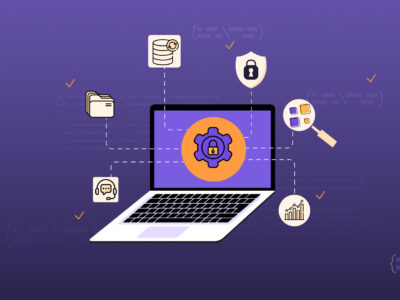Here’s How Much a Cyberattack Can Actually Cost You
According to Cybersecurity Ventures, in the next five years, the cost of cybercrime would increase by 15% yearly, reaching $10.5 trillion USD annually by 2025 from $3 trillion USD in 2015. In addition to being exponentially larger than the damage caused by natural disasters in a year, this represents the largest transfer of economic wealth in history and poses a threat to the incentives for innovation and investment. It will also be more lucrative than the global trade of all major illegal drugs put together.
The estimated amount of damage is based on historical data on cybercrime, which includes current year-over-year increases, a sharp rise in organized criminal gang hacking operations backed by hostile nation-states, and a cyberattack surface that will be orders of magnitude larger in 2025 than it is now.
Costs of cybercrime include data loss and damage, money theft, lost productivity, intellectual property theft, theft of financial and personal data, fraud, disruption of business operations following an attack, forensic investigation, restoration and deletion of compromised data and systems, and reputational damage.
US Cybercrime Attacks

According to data from Nasdaq, the world’s largest economy, the United States, accounts for one-fourth of the global GDP with a nominal GDP of close to $21.5 trillion. American citizens should anticipate that all of their data (personally identifiable information) has been stolen and is on the dark web, a subset of the deep web that is purposefully hidden and used to conceal and promote heinous activities.
According to some estimates, the deep web (which search engines do not index or have access to) is up to 5,000 times bigger than the surface web and is expanding at an unquantifiable rate.
Cybercriminals also purchase and sell malware, exploit kits, and attack services on the dark web, which they then use to target their victims, who include companies, authorities, utilities, and other crucial service providers operating on American territory. A cyberattack may be able to ruin the economy of a city, a state, or perhaps the whole nation of the US.
Warren Buffet, a multibillionaire businessman and philanthropist, claims that cybercrime is the world’s worst problem and that cyberattacks pose a greater threat to civilization than nuclear weapons. According to the World Economic Forum’s 2020 Global Risk Report, organized cybercrime enterprises are collaborating, and the possibility of their detection and punishment in the United States is predicted to be as low as 0.05%.
The Threat of Ransomware Attacks
Ransomware, a type of software that attacks computers (and mobile devices) and prevents users from accessing files unless a ransom is paid, has spread like wildfire over the world and has become the “go-to technique of attack” for cybercriminals.
Read more for The Most Common Types of Cyberattacks and How to Prevent Them.
Ransomware damages cost $5 billion in 2017, up from $325 million in 2015, according to a 2017 research by Cybersecurity Ventures. This is a 15x increase in only two years. Damages were predicted to have totaled $8 billion in 2018 and $11.5 billion in 2019.
According to the most recent estimate, the cost of ransomware damage rose to $20 billion by 2021, 57 times higher than it was in 2015. Another estimate in 2021 stated that ransomware attacks on enterprises increased from every 40 seconds in 2016 to every 11 seconds.
Ransomware attacks against hospitals, first responders, 911 systems, and healthcare practitioners are of special concern to the FBI. Ransomware even took its first victim in October 2020. A lady who required urgent admittance and had to be sent to another city for treatment died as a result of an IT system breakdown at a large hospital in Duesseldorf, Germany.
The Impact of Cyberattacks and Ransomware for SMBs

For all forms of cyberattacks, the average annual cost to enterprises has been skyrocketing. For instance, in 2018 a single malware assault cost over $2.6 million, and between 2017 and 2018 ransomware charges increased the most, rising from $533,000 to $646,000 (a 21% rise).
Small-to-midsized businesses (SMBs) are the target of more than half of all cyberattacks, and 60% of them fail within six months after suffering a hack or data breach. According to Mastercard, 66% of SMBs had at least one cyber incident in the previous two years. Regardless of the type of attack, information loss and business interruption have been determined to be the key cost drivers:
- Malware: Information loss has a significant impact and costs an average of $1.4M (54% of total losses).
- Online Attacks: Information loss is also a serious consequence of this type of cybercrime; the average cost is $1.4M (or 61% of all losses).
- Denial-of-Service (DOS): Business disruption is the typical result, with an average cost of $1.1M (65% of total losses).
- Malicious Insiders: Business disruption and information loss are the two main targets, costing an average of $1.2M ($0.6M apiece, or 75% of total losses)
No industry is immune to the rising cost of cybercrime; according to some surveys, firms have experienced a 67% increase in security breaches over the last five years alone. The banking industry is the most affected, with expenditures exceeding $18 million annually in 2018. Given that financial gain is constantly a primary motivator for hackers, this should come as no surprise.
The 3 “Invisible” Costs That Can Affect You and Your Businesses
Reputational Damage
Given that reputational harm costs are based on how people see one another, it is challenging to put a typical monetary value on them. Numerous factors, including unfavorable word-of-mouth, brand-defeating social media campaigns, declining consumer loyalty and trust, preference for rival services, and lost business, can have an adverse effect on a company’s image as a result of a data breach.
For publicly traded companies, this typically translates to falling stock prices, social media slurs, and an uphill battle to regain the trust and loyalty of their customers. Typically, this is done by offering free services like credit monitoring and a transparent roadmap of how security was strengthened after the breach.
Legal Fees
When patching up a cybersecurity breach, it’s excellent practice for both large and small firms to retain legal counsel. Hourly lawyer fees might vary depending on the circumstances, but they often range about $1,000. Legal costs may mount up rapidly. In the Home Depot case, the retailer was required to pay $15,300,000 in legal fees and costs to the attorneys who defended the company in a class action lawsuit. Legal fees may undoubtedly raise the event cost of a cybersecurity breach, regardless of the hourly rate that a business obtains.
Operational Halts
Financial stress will undoubtedly arise from operational interruptions brought on by cybersecurity incidents; yet, the full magnitude may surprise some. The average cost of downtime in information technology (IT) is $5,600 per minute. This works up to almost $336,000 every hour. This is the average price, yet actual costs will vary greatly based on the business model and IT reliances of the corporation.
What You Can Do About a Cyberattack

While all of these numbers may sound dire, there are a lot of people working behind the scenes to help keep you and your company secure. Anti-virus software and regular updates are good practices and outsourcing your IT security to professionals is also highly recommended.
See this for The Easy Way to Manage Your IT Security.
The team at ZenAdmin is committed to safeguarding your data from the public, the dark web, and even our own team by integrating unified IT security at the device, application, and network levels. You can breathe easy and hand over the work to the experts while you focus on your business. Book a free demo session today!














